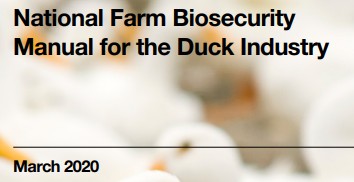Ducks are farmed in NSW for both meat and eggs.
Duck egg production in NSW is limited due to the challenging nature of raising ducks for egg production, particularly under commercial conditions.
Duck meat production is a much bigger industry, with most meat being sold through Asian butcheries and restaurants. The ducks are produced by large integrated companies and smaller independent farmers.
Ducks are grown in large temperature-controlled sheds. The growers raise the ducklings from day old until harvest weight and care for the birds by meeting their water, nutrition, bedding, lighting and ventilation needs. At the end of a batch, growers remove spent litter, wash and disinfect sheds to prepare for new ducklings to arrive.
Resources
National Farm Biosecurity Manual - Duck Production
This manual establishes a minimum set of biosecurity guidelines specifically for the duck industry. These guidelines are applicable to all duck farmers, from hatcheries to the point of delivery at the processor, commercial enterprises for egg and/or meat production, and breeding.

National Water Biosecurity Manual - Poultry Production
This manual outlines the water sources most commonly used by the Australian poultry industry and the risk of contamination, particularly by waterfowl. This report provides a description of the various methods of surface water sanitisation, and the advantages and disadvantages associated with each method.

Food safety
The NSW Food Authority provides information for producers planning to grow poultry for human consumption.

Industry Organisations
Australian Duck Meat Association
The Australian Duck Meat Association (ADMA) is the primary organisation representing the duck meat industry in Australia.

PoultryHub - Duck
Poultry Hub Australia (PHA) is a not-for-profit organisation which funds collaborative research that focuses on challenges identified in the Australian Poultry Industry.

